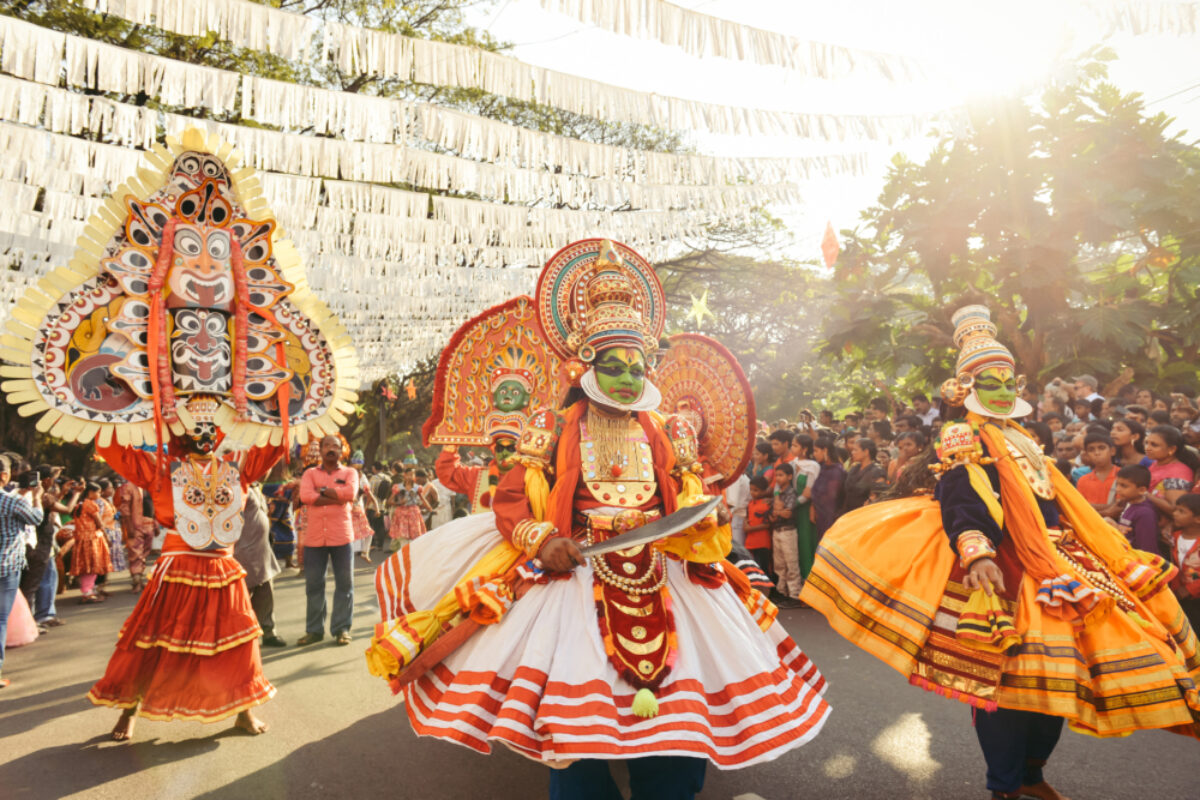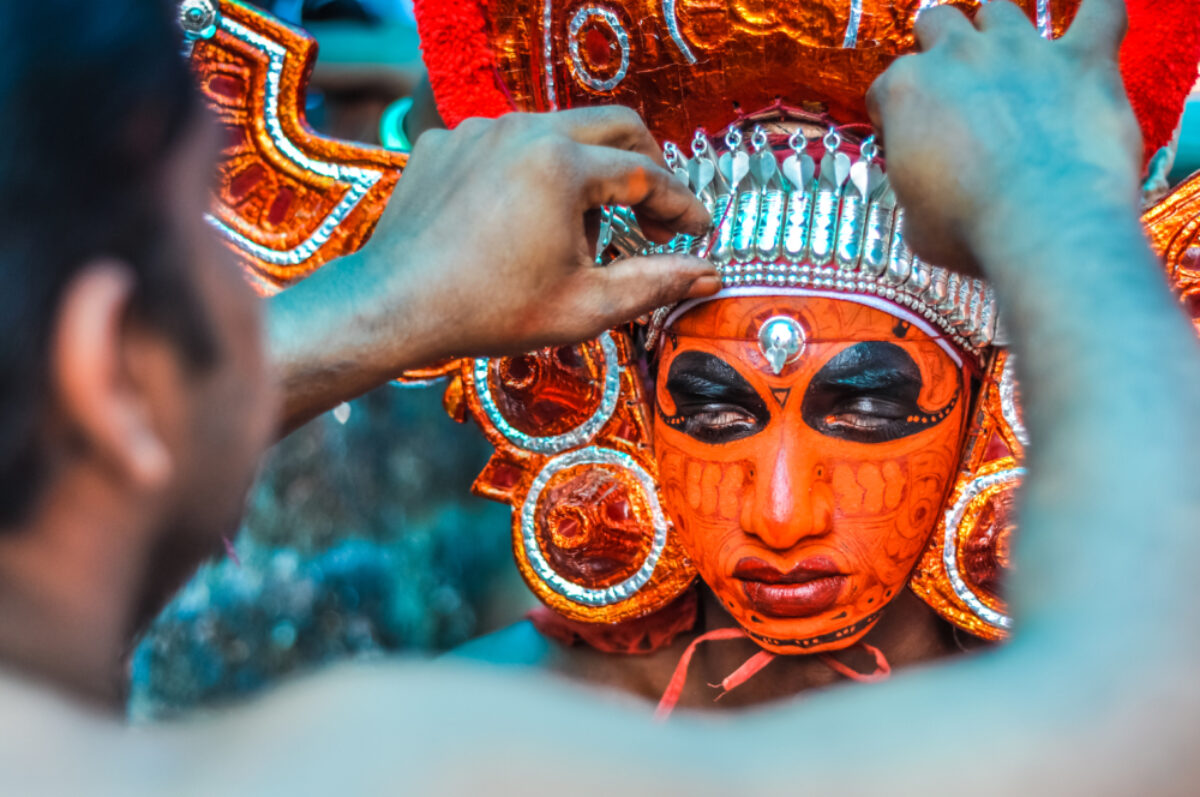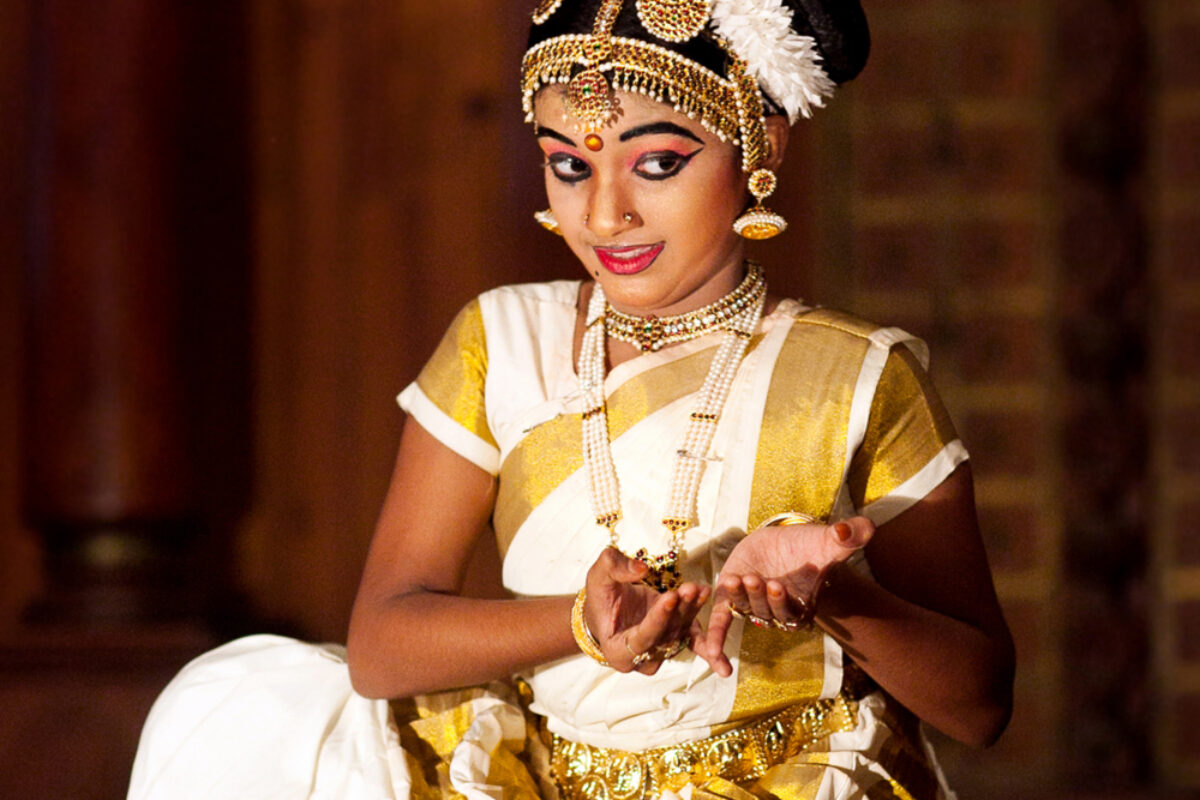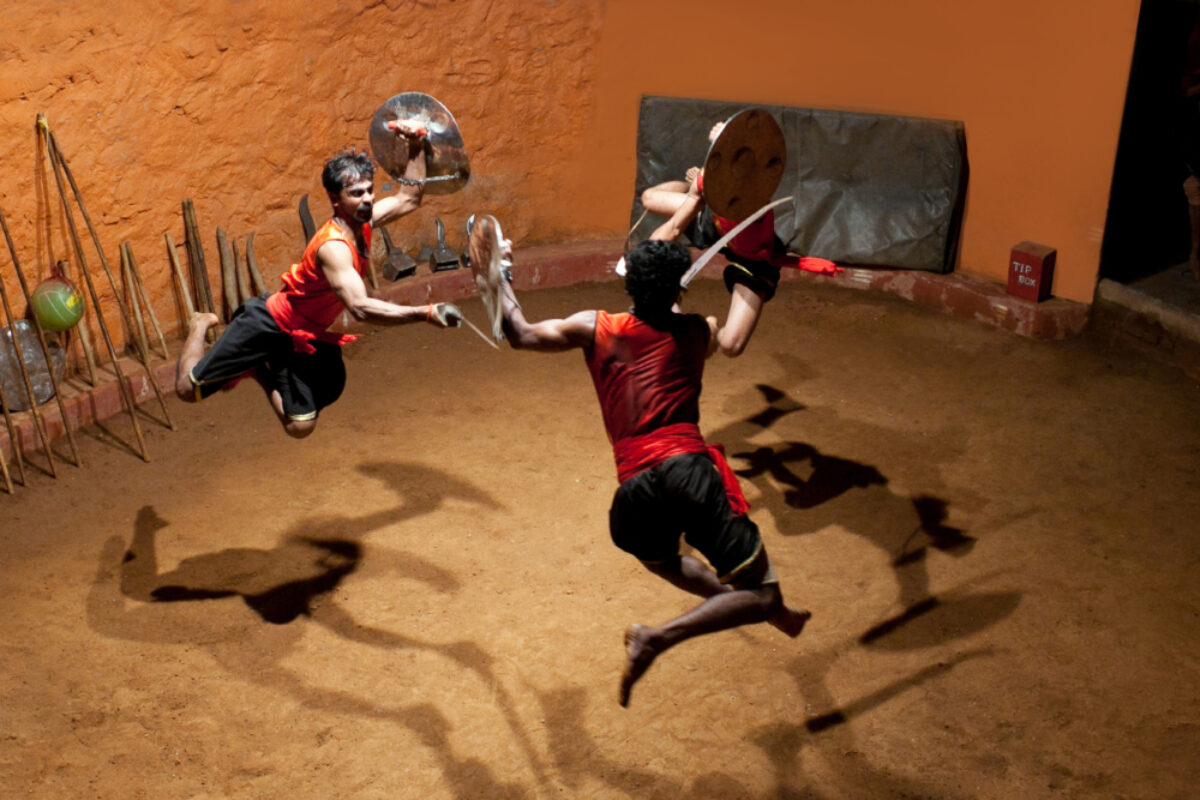Kerala’s ancient art forms
Look beyond Kerala’s houseboats, tea plantations and Ayurvedic retreats and you’ll see a more primal side to the state.
Kerala is home to many different types of classical dance, built out of traditional religious stories and filled with dynamic performances and elaborate costumes. Here’s our pick of four of the best.

Kathakali
The Keralan Kathakali dance is one of the seven classical dances of India. Known for its elaborate make-up, facial gestures and colourful costumes, Kathakali dance relates stories about deities and demons. There are 101 classical Kathakali stories, although only a third are still performed today. Intense drumming builds tension during a performance.
Traditionally performed by male dancers, it can be traced back to Hindu courts and temples as far back as 500 years ago and is one of India’s oldest theatre forms. Each performance tells a story through elaborate hand gestures called ‘mudra’, facial expressions (rasas) and body movements.
Kathakali performances used to last all night, with the climax of the performance occurring just as the sun rose. Today, performances tend to take place in the early evening at specific theatres. However, for a true taste of this art form, you can witness a night-long performance in Kerala’s villages, where the crowd rush the stage in excitement at the play’s end.

Theyyam
Theyyam is the folk dance of Malabar and translates as ‘the dance of the gods’. The performance is rooted in indigenous religious beliefs, told through a combination of singing, chanting and dancing. The main difference between Theyyam and Kathakali performances is twofold. Firstly, Theyyam performers traditionally belong to a lower caste. Secondly, Theyyam dancers not only act out the role of deities — it is believed they actually lose their own identity during a performance and become a conduit for the gods, receiving spiritual powers. This is why the end of a Theyyam performance will see the actors bless devotees. Unlike Kathakali shows in Kochi, Theyyam ceremonies are always authentic and are rarely attended by tourists.
Only found in the northern part of Kerala, there are more than 450 different forms of Theyyam, with each unique in style and music. Head to the villages around Kannur during the peak Theyyam season between December and February if you want to see a performance, but expect to be there for the long haul — Theyyam performances can last for up to 12 hours.

Mohiniyattam
Performed exclusively by women as a solo dance, the classical Mohiniyattam dance tells the Hindu story of when Lord Vishnu assumed the form of the enchantress Mohini to seduce the demon Asuras — in fact, Mohiniyattam literally translates as ‘dance of the enchantress’.
A Mohiniyattam performance has around 40 basic movements, marked by swaying hips and gentle movements from side to side. Look out for elaborate ‘mudra’ hand gestures and the stark white sari adorned with gold worn by performers, whose aim is to transmit the different forms of feminine love. Dancers are accompanied by a vocalist and performances are held across Kerala.
Kalaripayattu
Kalaripayattu is a 2,000-year-old India martial art form that originated in Kerala and is one of the world’s oldest fighting systems. Its movements draw inspiration from animals like lions, tigers, elephants and snakes, with attacking movements including strikes, kicks and weapons like daggers, mace and spears.
A pre-cursor to Kung Fu, the study of Kalari is designed to promote both physical and mental wellbeing, improving agility, core strength and mental wellbeing.
Today, Kalari is mostly practised as a form of entertainment, with performances taking place alongside Kathakali and other traditional dances. The adventurous can visit one of the many Kalari training centres in Kerala to train themselves.





